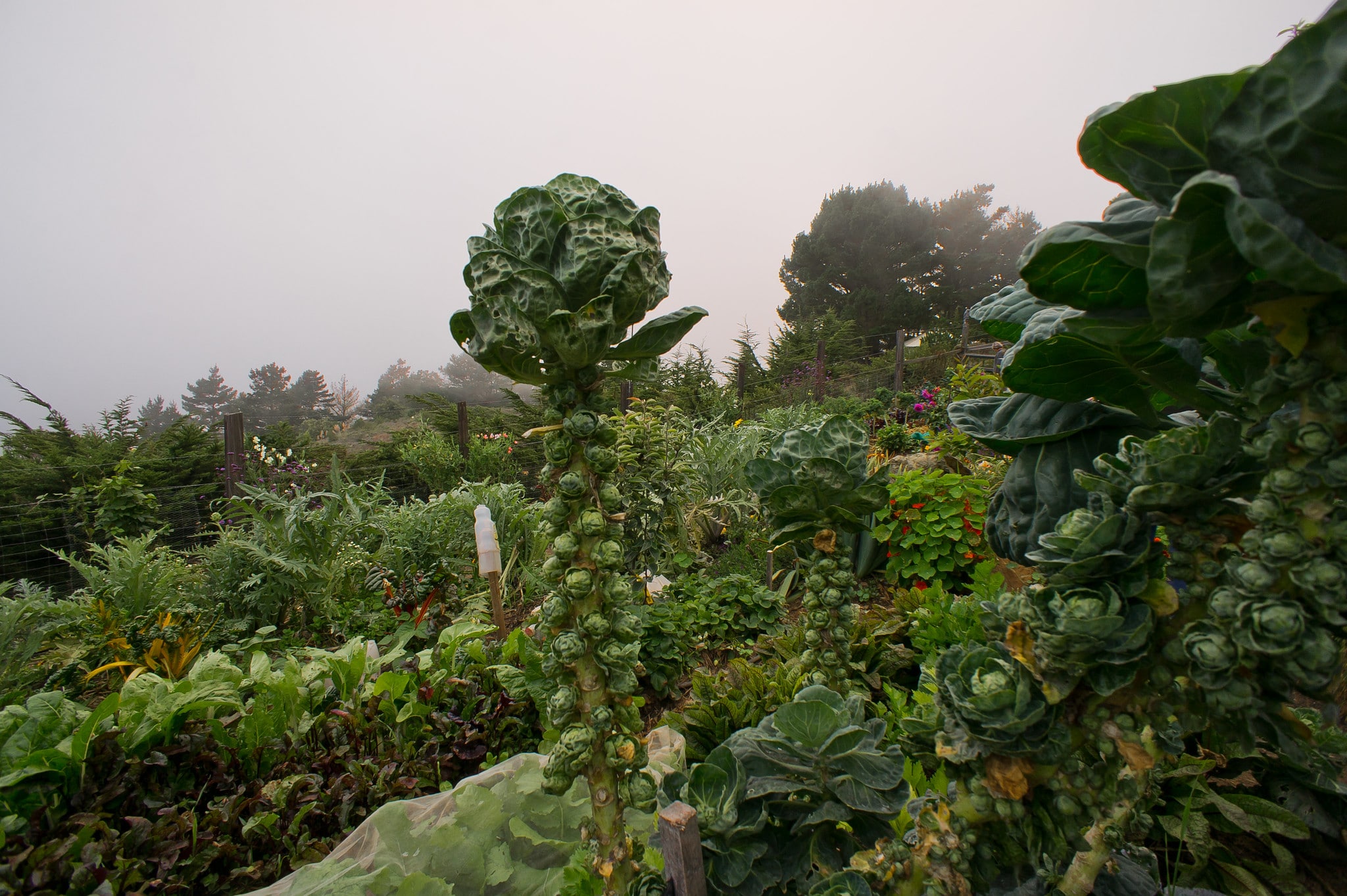If you’re an aspiring gardener who is trying to learn how to grow Brussels sprouts in Colorado, you must plan to plant them in late spring. Since it takes them a while to mature, their growing season could take much longer compared to other vegetable varieties. However, as long as you have the patience to wait, you’ll find it relatively easy to grow these vegetables.
Although Brussels sprouts are named after Belgium’s capital city, this type of vegetable was originally enjoyed in ancient Rome. Furthermore, this annual non-flowering plant’s botanical name is Brassica oleracea. In its mature form, Brussels sprouts reach up to 30 inches in terms of length and about 8 to 12 inches in terms of width.

Furthermore, it thrives when it’s planted in loamy soil with a 6.5 to 6.8 pH, and positioned in a spot where it can get full sun exposure. Since Colorado’s hardiness zones range from 3a to 7a, you can practically grow Brussels sprouts just about anywhere in the Centennial State.
Knowing How to Grow Brussels Sprouts in Colorado
As previously mentioned, it’s best to begin the seeds indoors for about 4 to 6 weeks before you plant them. Should you decide to plant them in June, your Brussels sprouts will have just enough time to grow before the fall season begins. Since they take longer to mature, these cool-season crops need a light frost to enhance their growth.
You’ll need to make sure that the soil is evenly moist so that your crop won’t fail. One way of doing this is to give mulching a try.
Are Brussels Sprouts Easy to Grow?
Yes, it’s relatively easy to grow Brussels sprouts compared to other types of vegetables. What’s more, they don’t take up much space in your veggie garden.
Brussels sprouts need to be started indoors for a period of 4 weeks before your area’s last frost date. However, it’s important to note that these are long-season crops that are usually planted in spring and harvested in the fall.
How Long Does It Take to Grow Brussels Sprouts?
Brussels sprouts are known to be slow-growing vegies. Under normal circumstances, they usually take an average of about 26 to 31 weeks before they get to produce a nice crop of sprouts.
They typically reach maturity between 80 and 90 days after they’re transplanted and, depending on the variety of sprouts, they take between 100 and 110 days after seed is sown.
What is the Best Month to Plant Brussels Sprouts?
The best month to plant Brussels sprouts depends on your location within the state of Colorado. It’s best for gardeners from Zones 3 and 6 to start seeds indoors in May. On the other hand, the planting schedule for Brussels sprouts in Zones 4, 5, and 7 is in April.
Do Brussels Sprouts Come Back Every Year?
Although Brussels sprouts are usually grown as annuals, they’re actually classified as biennial plants. If they’re kept for 2 seasons, they’ll produce four-petalled yellow flowers.
What are the Benefits of Growing Plants in a Greenhouse?
In case you’re not aware, plants happen to grow better and faster when they’re planted in a greenhouse. A lot of people tend to think twice before they decide to embark on their greenhouse gardening journey because of the cost.
However, the benefits that they get by setting up their own greenhouse far outweighs the cost. If you’re curious to know more about the benefits of greenhouse gardening, check this out:
You’ll get to grow your own food
One of the biggest benefits of greenhouse gardening is the fact that you’ll get to grow your own food. This spells more savings on groceries because fruits and vegetables can get pretty expensive.
You’ll be able to control the greenhouse eco-system
Greenhouse plants tend to grow faster and better than those that are planted in traditional outdoor gardens. This is due to the fact that unlike their outdoor counterparts, greenhouse plants live in a controlled environment where the temperature, moisture, and humidity are maintained at their optimal levels to enhance plant growth.
Your plants won’t be exposed to inclement weather
Your greenhouse can serve as a layer of protection for your plants against harsh weather conditions such as torrential rains, snow, hail, and strong winds.
You can keep harmful bugs and animals out
Greenhouse gardening allows you to keep seasonal pests and varmints at bay. Moreover, pest control is much easier to implement because a greenhouse is a closed system. Conversely, you also have the option to place insects such as bees and ladybugs that help protect your plants and improve their quality.
You’ll have more plant options
A greenhouse allows you to plant fruits, veggies, and flowers that aren’t native to your region. As long as you know and understand what these exotic plants need in order to thrive, you can make the necessary adjustments so that you can reap your ideal harvest.
Learn How to Grow Brussels Sprouts in Colorado Greenhouses!
Now that you’ve probably figured out how to grow Brussels sprouts in Colorado, why don’t you give greenhouse gardening a try? Krostrade produces the strong and durable greenhouses that are made from top-quality materials and are specially made to meet your needs. Check out our products today!
